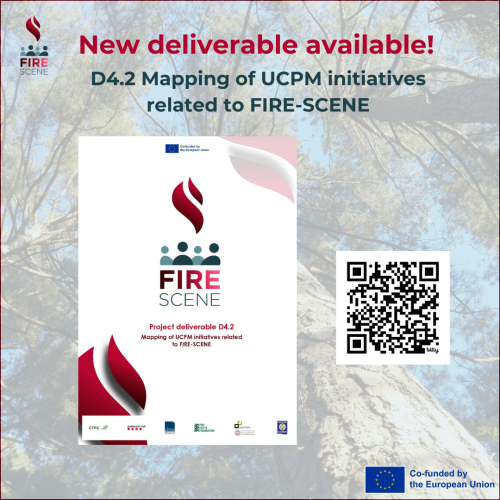
This year, the FIRE-SCENE project opens in new tabhas published a document (Deliverable 4.2 Mapping of UCPM initiatives related to FIRE-SCENEopens in new tab) that compiles a total of 55 initiatives addressing WildFire Risk Management (WFRM) and the Civil Protection Challenges (CPCs) related to FIRE-SCENE. Their focus is on wildfire risk analysis, planning, and governance. This mapping recognises the value of the vast amount of knowledge generated by the projects it showcases, and paves the way for synergies, collaboration and knowledge exchange among ongoing initiatives.
Wildfire management is becoming increasingly complex as severe, simultaneous, and extreme events occur more often, exposing the limits of the response capacity. We are now seeing such events in Spain and other Mediterranean countries. In light of this, FIRE-SCENE’s analysis of previous and ongoing initiatives has considered three main focuses: (1) projects that have developed methodologies for assessing wildfire risk from the Wildland-Urban Interface (WUI) to the landscape scale; (2) initiatives focused on land-use planning, and wildfire adaptation to reduce wildfire impacts; (3) programmes that have fostered a collaborative approach, including stakeholder engagement or policy development to enhance wildfire risk governance.
Furthermore, the initiatives mapped align with the emerging Civil Protection Challenges (CPCs) addressed by FIRE-SCENE. These CPCs are wildfires impacting on WUI in peri-urban areas (CPC1), tourist villages and resorts (CPC2), and protected areas and recreational sites (CPC3). FIRE-SCENE contributes to enhancing competencies, skills and knowledge in WFRM by focusing on developing methodologies and tools for an integrated risk governance, assessment and planning approach to address novel civil protection requirements to cope with the emerging wildfire risk.
The mapped initiatives include 27 related to UCPM and another 28 relevant to FIRE-SCENE’s work, and half of them are ongoing. Most of them can be implemented at the European scale. Furthermore, the document includes national, regional, local and cross-border scales of work. Regarding the actors represented, these include Civil Protection, fire services, authorities, forest managers, local communities, the tourism sector, and young people. With this, the report reflects the variety of territorial frameworks and stakeholders.
The 55 initiatives prioritise several key solutions for disaster risk management concerning risk analysis, assessment, monitoring, forecasting, awareness and communication; early warning systems; planning tools and decision-support systems; governance improvement; capacity building; community engagement and self-protection mechanisms.
Focusing on prevention, preparation and response, through analysis, planning and governance, FIRE-SCENE provides an array of solutions ranging from technological innovations to risk governance strategies. This ‘Mapping of UCPM initiatives related to FIRE-SCENE’ cannot only frame and improve FIRE-SCENE results, but also inspire stakeholders involved in WildFire Risk Management (WFRM) to identify new and more effective ways to contribute to strengthening Civil Protection, in alignment with the EU preparedness strategy.